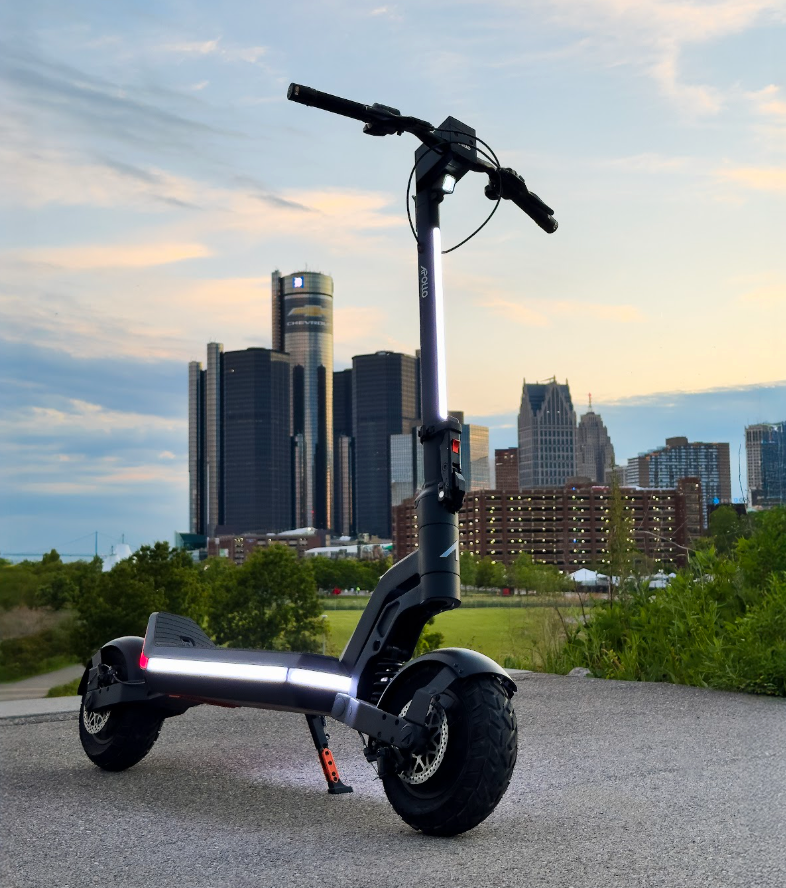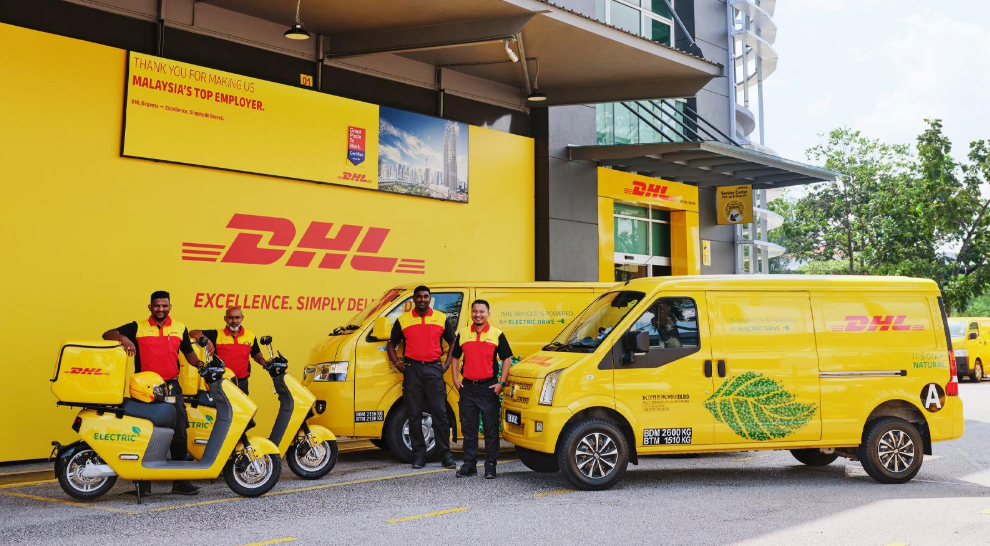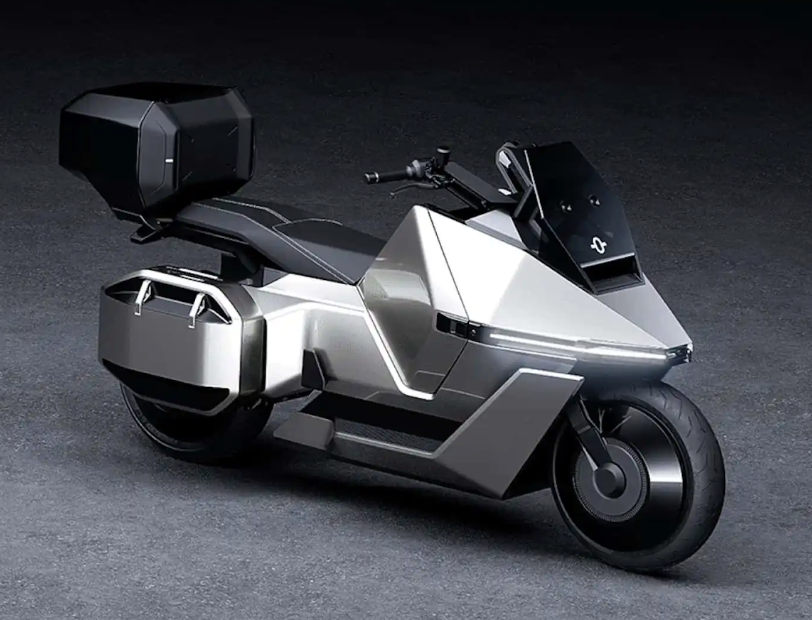Why Weather Plays a Role in E-Scooter Performance
When buying a scooter or when riding a scooter for the first time, you may not think about the weather. Sure, you may consider bundling up a bit more or taking an extra water bottle, but many riders don’t consider the impact on performance.
Does it sound strange? Not really. Here’s why: electric scooters rely on lithium-ion batteries, electronics, and rubber tires; so factors like temperature, rain, and humidity directly affect how far and how safely you can ride. Whether it’s icy winter mornings or scorching summer afternoons, it’s important you understand how each of these factors affect performance so you can protect your scooter accordingly and plan your rides.
Impact of Cold Weather on Battery Life and Range

When temperatures drop, so does scooter battery life (cold weather actually impacts any lithium-ion battery, whether scooter or your electric vehicle’s battery). Lithium-ion batteries work by the intercalation and de-intercalation of lithium ions on the positive and negative electrodes respectively for charging and discharging.
When in lower temperatures (defined as lower than 0°C by most papers), the electrolyte conductivity slows down. Which results in a lower lifespan and state of charge. In other words, cold weather impacts your battery in two ways: first, it decreases the battery health, reducing the number of cycles and also the battery capacity, so you’re likely to lose around 20% of the range.
IMPORTANT: In even lower temperatures, the electrolyte could even freeze leading to failure - it could even cause a short circuit.
Tips for cold-weather riding & keeping a scooter safe:
Before riding:
-
Make sure to store your scooter indoors to keep the battery at a suitable temperature throughout the winter (and away from water or any other elements that could harm the electrical components).
-
Ensure the battery is fully charged before heading out on a ride.
-
To maintain optimal performance in varying weather conditions, preheating the batteries is recommended. Storing the e-scooter indoors achieves a similar effect to heating the batteries in electric vehicles.
-
Check the weather before heading out! Avoid riding in freezing temperatures & in wet weather.
While riding:
-
Ride gently to conserve energy and maintain control.
-
Cold weather often comes with freezing roads - go slow and ride carefully (you may even want to consider changing the tires) to avoid slipping.
-
Bundle up! Cold weather not only affects the scooter, but also the rider. You’ll want to make sure your hands and body are warm or you may not be able to accelerate or brake properly.
After riding:
-
It’s important to keep your electric scooter in a dry and warm place. Make sure to wipe it down to avoid corrosion from any of the elements. Check out more tips on riding your scooter in the winter.
Heat and Its Effect on Motor Efficiency and Components
Hot weather brings the opposite problem: overheating. Extreme heat can strain both the motor and battery, shortening overall battery life and affecting e-scooter performance. Rubber parts may soften, and internal components can degrade faster.
While cold is pretty bad on the battery - extreme heat could be worse! Here’s a deep dive on how it could impact your scooter:
Controller:
Scooter controllers are sensitive to high temperatures. Many include thermal protection systems that automatically shut down or reduce power when things get too hot — protecting the internal electronics. To keep performance steady, avoid prolonged exposure to direct sunlight. With Apollo scooters, you can even monitor controller temperature in real time via the Apollo App.
Battery:
This is the big one. Lithium-ion batteries and heat are not friends. Extended exposure can cause battery cells to degrade faster, lose capacity, or, in extreme cases, overheat and catch fire. It’s the same principle seen in electric vehicles and smartphones. “High temperatures can accelerate degradation and shorten battery life,” particularly when stored or operated above 30°C (86°F). Always store and charge your scooter in a cool, dry environment.
Rubber Parts (Tires & Internal Components):
Ever seen tires or shoe soles get sticky in the summer heat? That’s because rubber softens and begins to break down when temperatures rise. The same happens with scooter tires and rubberized components — high heat speeds up wear, reduces grip, and can loosen key fittings. Check your tires regularly during warm months for soft spots or cracks to keep your rides safe and smooth.
To protect your scooter in heat:
-
Check the temperature before heading out - hot humid days, maybe not ideal for riding.
-
Avoid direct sunlight for extended periods and make sure that you park in a shaded, cool place.
-
Don’t charge immediately after a long, hot ride.
-
Avoid fast charging on hot temperatures.
-
Keep an eye on your tires — heat can increase tire pressure and it can also degrade your tires faster, making them susceptible to punctures.
Riding in the Rain: Traction, Safety, and Visibility
Riding in rain is possible with many modern water-resistant e-scooters, but wet weather demands extra attention to e-scooter performance and rider awareness. Rain reduces traction, which affects both stability and braking distance.
If you plan on riding in rain, make sure you’re comfortable handling slippery roads and slower braking response. Puddles can hide potholes or uneven pavement, so maintaining a moderate speed and avoiding sudden turns is key to e-scooter safety. Reduced visibility also makes you harder to spot, so always turn on your headlights, wear reflective gear, and ride predictably around vehicles.
Your scooter’s IP rating (Ingress Protection) is the best way to determine how much moisture it can handle. Most electric scooters are water-resistant—not waterproof—which means they can tolerate light rain or splashes but should never be submerged or left outside in heavy storms. It’s also important to remember that water resistance ratings only apply if the scooter’s seals and components remain original and undamaged.
After any wet ride, proper electric scooter maintenance is essential. Dry your scooter thoroughly, wipe away any mud or dirt, and let it air out completely before charging. This helps prevent corrosion, protects electronic components, and keeps scooter performance at its best all year long.
How Humidity and Moisture Affect E-Scooter Durability
If electric scooters are water resistant, can’t they handle humidity? Well, humidity may not sound as dramatic as a thunderstorm, but the reality is that it can be just as harmful. Moisture is sneaky and it can quickly find its way into joints, screws, and electronics - and the worst - it does it without you noticing. Making it even worse.
So can scooters handle humidity? Yes. But only if you take the necessary precautions. This includes wiping your scooter after every humid or rainy ride (even if it's a drizzle) and keeping your scooter in a dry and ventilated area. Remember to clean your scooter regularly to prevent dirt build up and to ensure you catch any rust at the slightest appearance.
Seasonal Maintenance Tips for Better Performance
Electric scooters can endure many different conditions, but only if the owner is knowledgeable, careful and carries out the necessary maintenance and care:
Check out this video for the full tips, but remember to do these specific things on seasonal times:
Winter
-
Storage: Keep your battery warm and dry to protect performance.
-
Riding: Avoid salt exposure and don’t ride in temperatures below 32°F (0°C).
-
TLC: Wipe off any salt or chemicals, lubricate moving parts, and make sure the battery doesn’t fully drain.
Summer
-
Storage: Store in a cool, dry area, away from direct sunlight.
-
Riding: Enjoy long rides, but avoid extreme heat. Always follow e-scooter safety precautions.
-
TLC: Check tire pressure regularly, lubricate components, and ensure screws are secure.
Rainy Season
-
Storage: Keep your scooter in a dry area when not in use.
-
Riding: Avoid heavy storms and puddles. Ride cautiously if you must go out in wet conditions.
-
TLC: After every ride, thoroughly dry your scooter and remove any dirt or mud to prevent corrosion.
Conclusion: Maximizing E-Scooter Performance Year-Round
Weather is one of the biggest variables in e scooter performance, but with proper care and attention, you can keep your rides smooth and reliable in any condition. It’s important you protect your battery, adjust your riding style, and carry out regular maintenance to ensure your scooter is in the best riding conditions. Plus, if you do this you will get more years out of your scooter before you have to replace it.






